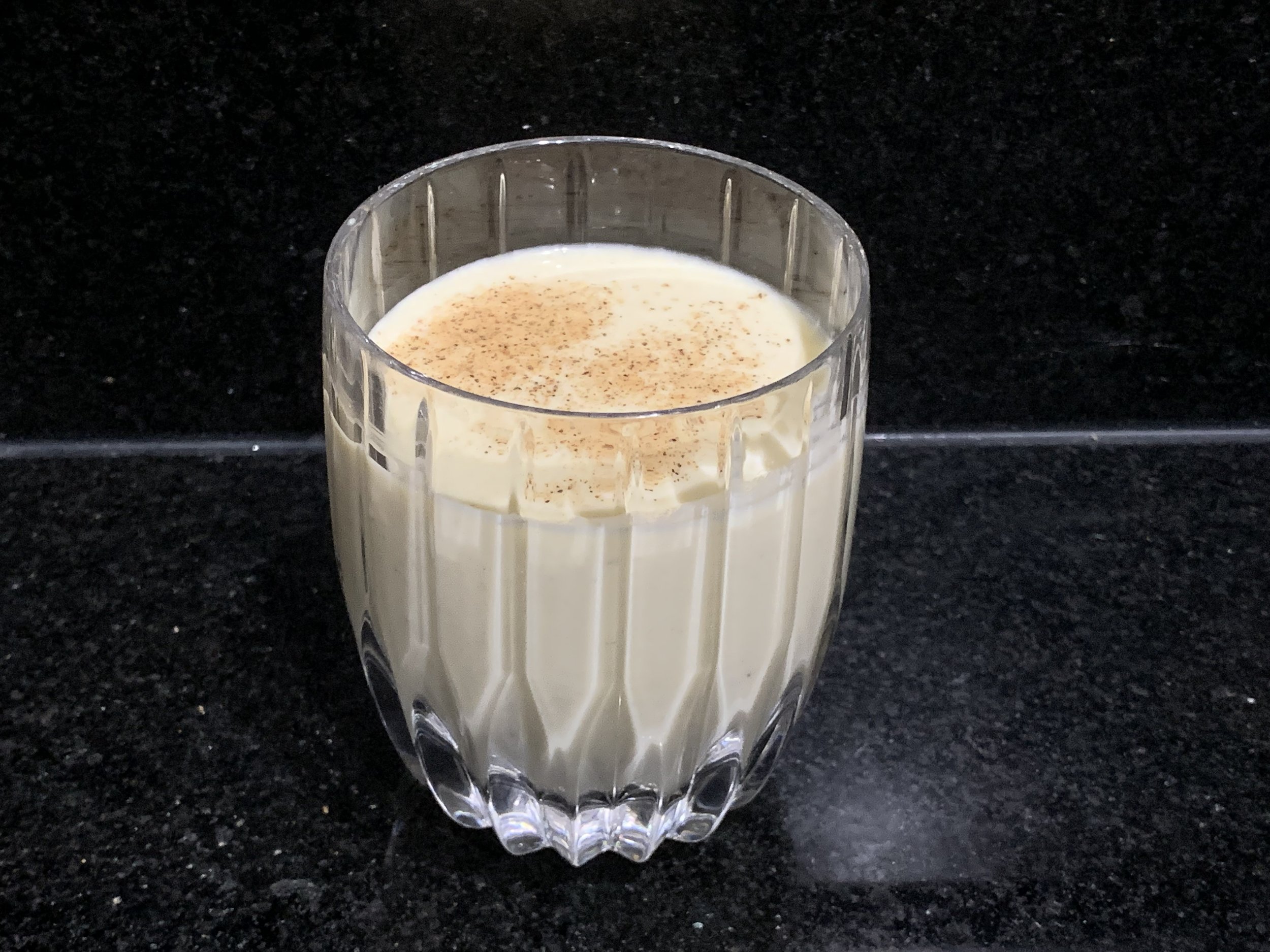Eggnog
Eggnog is my jam and always has been. Since I’ve had it since I was probably still in diapers, you can imagine my surprise when I learned that most people associate eggnog with alcohol. “Grandma Got Run Over By A Reindeer” took on a new meaning. Let’s just say she was not staggering because of the richness of eggs, cream, and sugar.
My fingers wrapped themselves around an eggnog carton before my head could resist that it was still October. I justified the early purchase since 2020 was a dry year – thanks COVID shortages. However I managed to wait until the night of Thanksgiving to pour myself a tall, cold one, closed my eyes, inhaled, and sipped. Blaaaaaaaaaaaaaaaaaaah – aaaaaand this is why people don’t like eggnog. It tasted fake and the consistency was gummy despite it being a liquid. Ok this brand is bad bad.
I remembered my mom made eggnog one year and it was the best one I’ve ever had. So I set out on a mission to make you eggnog haters to become eggnog lovers. Before you gawk at me, eggnog is basically a very loose custard or pudding. Sounds much better, right?
During my eggnog research, I realized there are clearly different styles of eggnog: creamy v light and frothy; cooked v raw; and boozy v pure (my term). Creamy is the kind I’ve always had so this is the direction I ran with.
Most of the recipes call for raw eggs. Ewwww! Hear me out here. The chances you’ll get salmonella from eggs in the US in the 21st century is miniscule. I will not shy away from eating a spoon of raw cookie dough or lick the cake beaters. However, with the exception of an occasional pisco sour, the thought of drinking raw eggs freaks me out.
Ok, so I fall into the cooked eggnog category. According to USDA guidelines, eggnog should be cooked to 160 degrees. Let me tell you – this is not good in the land of eggnog. If you have enough eggs for it to be eggnog, cooking to that temperature will thicken the liquid too much. Upon further research, I found out fried eggs that still have a liquid center does not get hot enough to kill salmonella. Well, there we have it folks, I will not be cooking my eggnog to 160 and I am better than ok with it.
I find heating the mixture to 120 degrees is my sweet spot. The gentle heat will thicken the liquid to give it the velvety texture I crave, but not too much. For the record, 120 degrees will not kill food bacteria.
I prefer my eggnog sans alcohol. I know this is an unpopular opinion but I think the alcohol thins out the velvet and cuts the flavor. I never tested this recipe with alcohol, but I’m sure you can mix some in if you like.
Ingredients
3 eggs
¼ c sugar
1 c heavy cream
1 c whole milk
1/8 tsp salt
1.5 tsp nutmeg
Directions
Add the eggs and sugar to a 3 quart sauce pan. Whisk by hand until frothy.
Whisk in the cream, milk, salt, and nutmeg. Wisk occasionally until the mixture reaches 120 degrees.
Immediately chill the mixture in an ice bath and refrigerate.
Notes
If the liquid is too thick, thin it out with a little milk. If you do so, you may need to add a little more nutmeg.
If you’re opposed to nutmeg, try substituting cinnamon for nutmeg. It’s not the traditional flavor, but it’s ok to adapt.
If the heat got away from you and it curdles (it shouldn’t happen since we aren’t heating it high), run it through a mesh strainer. It’ll be good as new!

